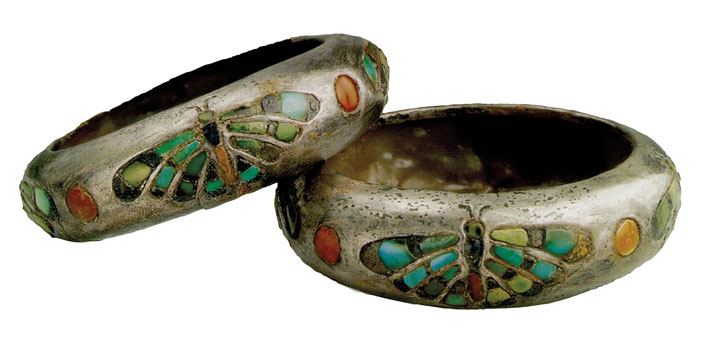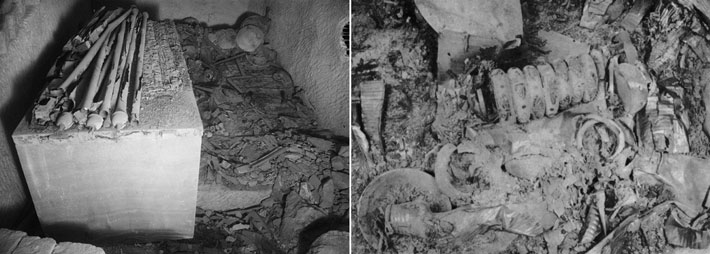By JARRETT A. LOBELL
 Archaeologists excavating the tombs of pharaohs, queens, and nobles of ancient Egypt have found rooms filled with objects made of gold—solid gold masks, golden furniture, and thousands upon thousands of pieces of gold jewelry. Perhaps surprisingly, they have found very little silver, especially dating from the Old Kingdom (ca. 2649–2150 B.C.). A rare exception are the bracelets of Hetepheres I, wife of the founder of the 4th Dynasty, Snefru (reigned ca. 2575–2551 B.C.), and mother of Khufu (reigned ca. 2551–2528 B.C.), builder of the Great Pyramid. The queen’s wooden jewelry box containing her bracelets was discovered in her tomb in Giza in 1925, but the bangles had not been studied for decades. A team has now reexamined the bracelets, employing the latest scientific techniques, and has found answers to some of the questions that have always surrounded them—including where the silver came from.
Archaeologists excavating the tombs of pharaohs, queens, and nobles of ancient Egypt have found rooms filled with objects made of gold—solid gold masks, golden furniture, and thousands upon thousands of pieces of gold jewelry. Perhaps surprisingly, they have found very little silver, especially dating from the Old Kingdom (ca. 2649–2150 B.C.). A rare exception are the bracelets of Hetepheres I, wife of the founder of the 4th Dynasty, Snefru (reigned ca. 2575–2551 B.C.), and mother of Khufu (reigned ca. 2551–2528 B.C.), builder of the Great Pyramid. The queen’s wooden jewelry box containing her bracelets was discovered in her tomb in Giza in 1925, but the bangles had not been studied for decades. A team has now reexamined the bracelets, employing the latest scientific techniques, and has found answers to some of the questions that have always surrounded them—including where the silver came from.
In the past, it has been thought that Egyptian silver was derived from electrum—an alloy of gold and silver with a high silver content—mined in Egypt, which has no native sources of pure silver. The new study has shown that the bracelets are indeed pure silver and that the source of the metal was either the Cyclades in the Aegean Sea or the mines at Lavrion on the Greek mainland. “That’s a big shift away from traditional views,” says archaeologist Karin Sowada of Macquarie University. “Previously, a connection with Greece during the early Old Kingdom was never really considered feasible. Identifying the source of silver for the bracelets connects a lot of previously disparate evidence, and the silver’s Aegean origin exposes a previously hidden exchange network across the eastern Mediterranean.”
